It's been many years since I first came across a recipe for cinnamon-swirl bread. (For the uninitiated, cinnamon-swirl bread is something like raisin bread, but without the raisins. Just a lovely swirl of cinnamon sugar throughout the loaf.) At the time, it struck me as vaguely magical: one of those things I would buy at a bakery, not something I could make in my very own kitchen. Turns out it's not at all impossible, and every bit as good as it sounds. I made a loaf or two at the time, and it was damned delicious.
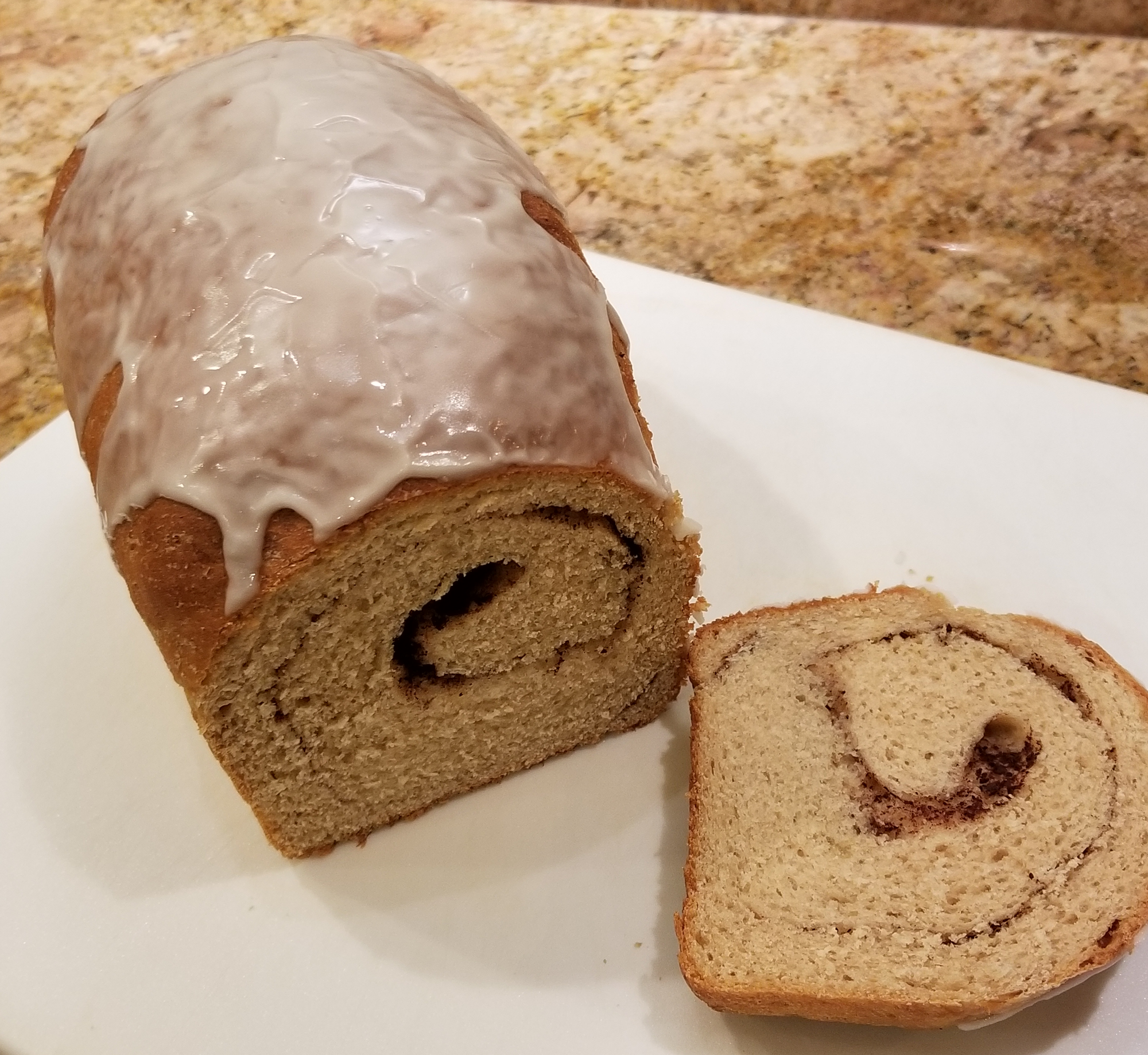
Why, you may be wondering, would you make cinnamon-swirl bread when you could make cinnamon rolls instead? Cinnamon-swirl bread is an entirely different thing: more bread-like, not nearly as sweet, easier to fit in the toaster. As it turns out, cinnamon-swirl bread also makes fabulous French toast.
In the intervening years, I've pretty much stopped eating white bread. But I've always remembered that cinnamon-swirl loaf, and wondered how good a whole-grain version of it would be. That's all I did, though: wonder about it. Until I was leafing through a cookbook, and came across a recipe that, for some reason, struck a chord. I bet this could be the basis for a great cinnamon-swirl loaf.
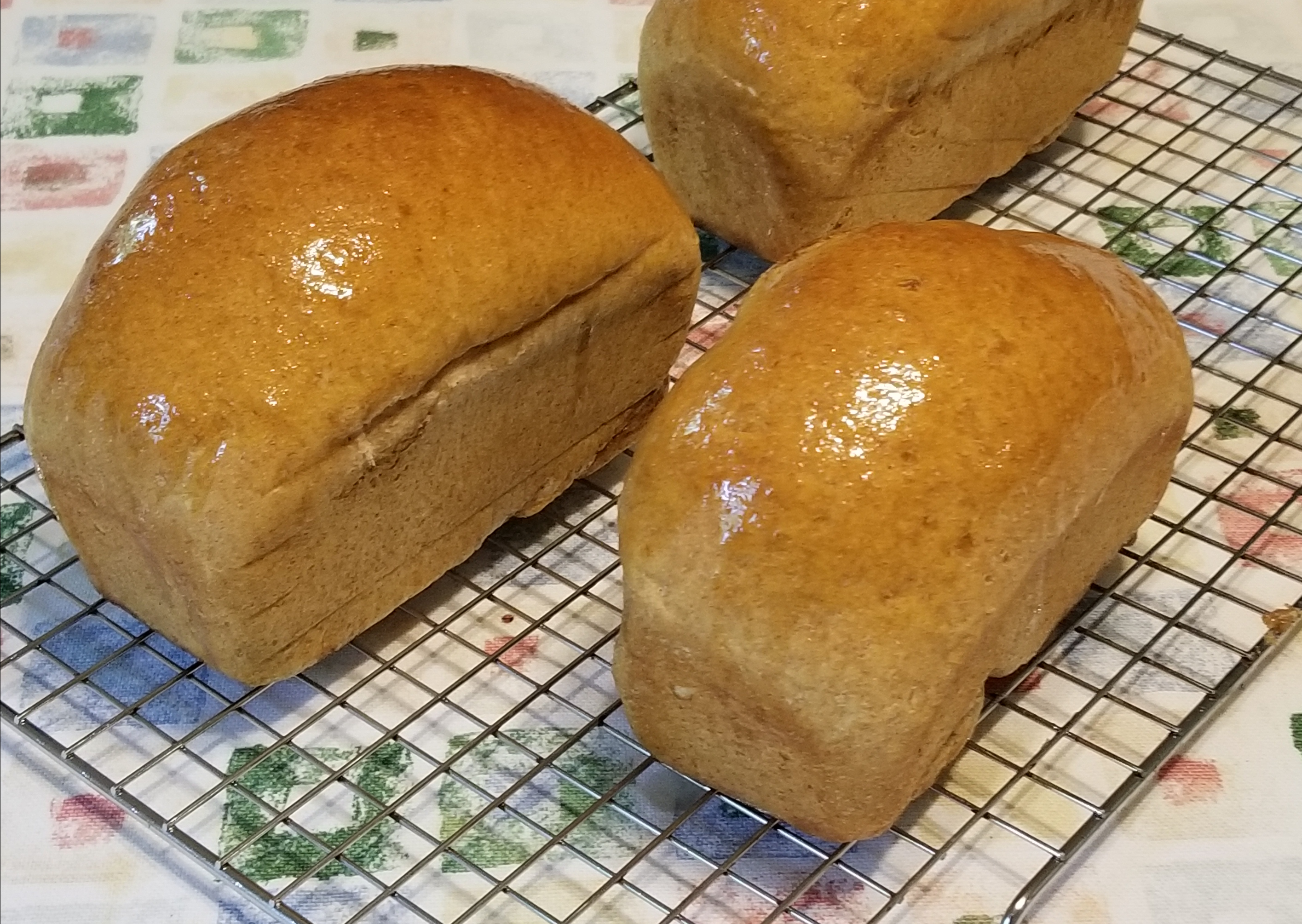
Well, as it turns out, the original recipe was a lot too big. (You saw that coming, didn't you?) It made two large loaves of bread. I cut the recipe in half, and made a single loaf of cinnamon-swirl bread. It was delicious, but still an awful lot of bread. I ate some fresh, I had several hefty slices of toast, and I still had half a loaf left, getting stale. Eventually I used the remainder to make (absolutely fabulous) French toast. It was a lot of fun, but I was still left with the impression that large loaf of bread does not qualify as a "Half-Size Bake".
Then I had a brain-wave, and though of mini-loaves. Instead of one large loaf of bread, I could cut the recipe down further and make two mini-loaves. I could eat one fresh and freeze the other for another day. As it turns out, this works extremely well.
Unlike most "whole wheat bread" recipes, which are really white bread recipes with a bit of whole wheat added as an afterthought, this is a true whole wheat bread. It contains no white flour at all. Nevertheless, it is surprisingly fine-textured and light, with a lovely whole-grain flavor.
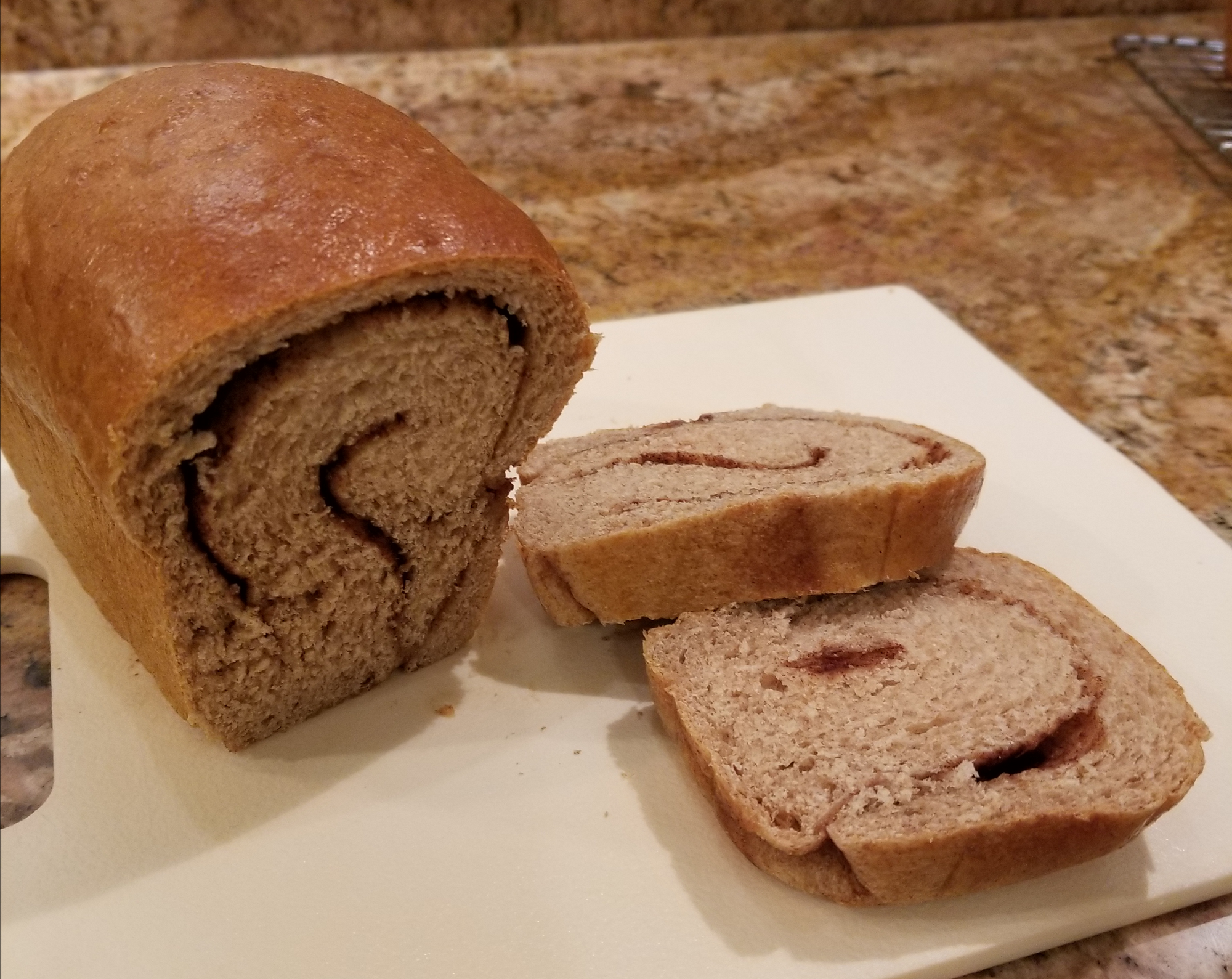
Cinnamon bread is generally said to have originated in Sweden, where St Lucy's Day is observed on December 13. This is the start of the Christmas season, and is celebrated with sweet breads and coffee.
Notes
Unlike many of the recipes I post here, this bread is not gluten-free. There are recipes out there for gluten-free cinnamon bread, but I have not tried any of them.
Because loaf pans have slanted sides, the bottom of the pan has different dimensions than the top of the pan. There doesn't seem to be any consensus as to which measurements to use in specifying a pan size. So I decided (arbitrarily) to use the bottom measurements.
You can also use this recipe to make plain loaves, which are great for sandwiches. Follow the same directions, but leave out the cinnamon and sugar when forming the loaf. Or, you can make one cinnamon mini-loaf and one plain – actually the only reason I didn't do that myself was that I didn't think of it in time.
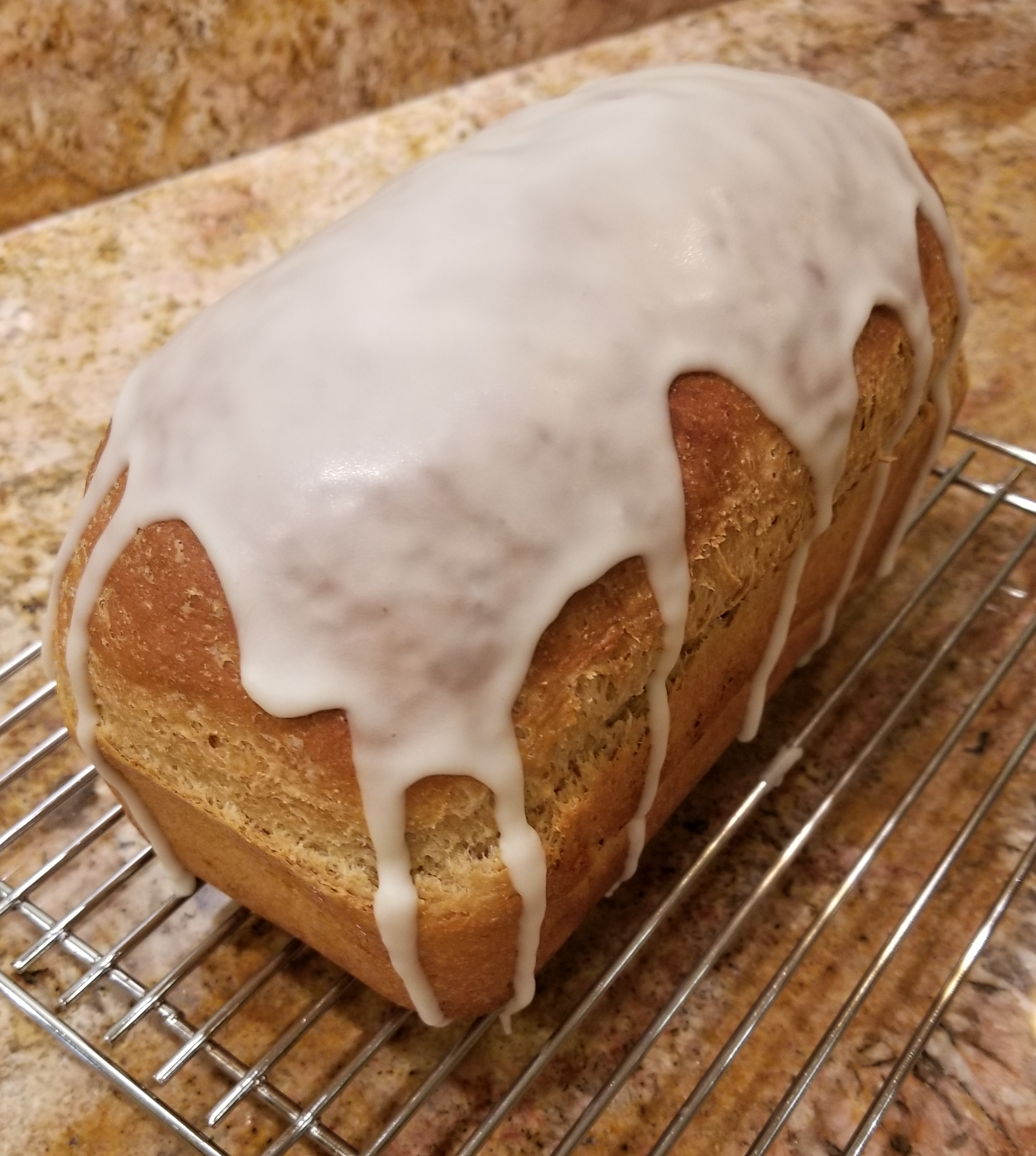
The first time I made this bread, I frosted the loaf. This is a pretty finish, but not very practical if you are planning to toast the bread: the frosting just burns in the toaster. The second time, I brushed the loaves with melted butter, and found this to be an excellent finish.
If you've never made whole-wheat bread before, it's a surprising process. When you first add liquid to the flour mixture, the whole thing turns an unappetizing dark grey-ish brown, and becomes very sticky. Then, as you knead it, the dough becomes supple and the color lightens considerably. When the dough is completely kneaded, you can look at it closely and see that it is a pale creamy color with flecks of darker bran throughout.
Kneading the dough takes some time and effort. With a larger volume of dough, you can use a stand mixer and a dough hook to do all the hard work, but with a small recipe like this one, there just isn't enough dough for the dough hook get a good grip, and it's more effective to just knead it by hand.
(Yes, I have tried KitchenAid Artisan Mini, which many rate the best small mixer available. No, I didn't find it satisfactory. We shall not speak further of this. The pain is too fresh.)
Inspiration
The original recipe for cinnamon-swirl bread was in The Better Homes and Gardens New Cook Book (1976). It started with a plain white loaf. The bread used here is based on "Featherpuff Bread" from The Laurel's Kitchen Bread Book.
Cinnamon-swirl loaves has a tendency to "separate" along the swirl line, because the addition of cinnamon and sugar prevent the dough from fully melding together. The trick of spraying the filling very lightly with water was something I first saw in a recipe from America's Test Kitchen.
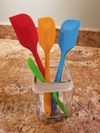
Comments powered by Talkyard.